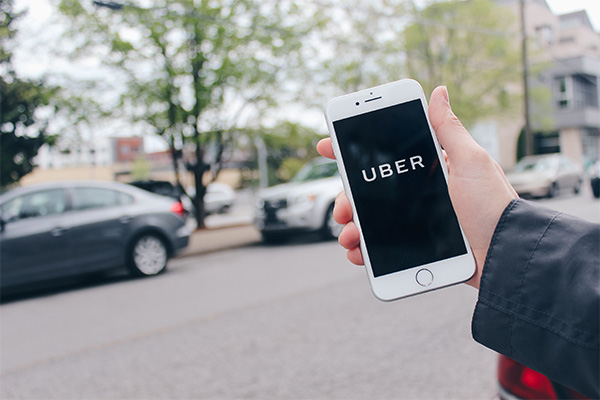With the country still reeling from high fuel prices and other economic troubles and with a potential recession on the horizon, the gig economy continues to work around the resulting strain on operations. But many in the gig driving sector are giving up on ridesharing as a sustainable source of income in the face of high costs.
Such persons include Bridgeport resident Lynn Howell-Mosher, who stepped away from ridesharing via Uber, citing the high cost of gas, in order to focus on her business, Rapha Massage.
But not all gig drivers are discouraged by these conditions ”” Howell-Mosher”™s husband, Daryl Howell, for instance, continues to rideshare and plans on doing so for the foreseeable future.
Howell drives from his home in Bridgeport to his job at the post office in Stamford from 3 p.m. to 11:30 p.m. On most nights, and after concluding his shift, Howell begins his ridesharing session for Uber, which lasts about two and a half hours.

Howell”™s approach to ridesharing is freeform, with no rigid adherence to a strict strategy, provided he is earning enough at the end of his session.
“I go wherever, whenever,” Howell said, “There”™s a lot of people that don”™t care for two-, three-mile trips or whatever. To me, it adds up.”
September will mark the fourth year Howell has worked as an independent contractor for the ridesharing company. His reasons for getting into the business is simple and understandable.
“The extra money, if I”™m being honest,” he said.
Extra cash aside, Howell also finds gig driving enjoyable, stating that practically all passengers are amiable and responsible.
“People, for the most part, are really nice,” Howell said of the more-or-less 5,500 passengers he has driven. “Despite how many trips I”™ve done, I”™d say I could count on one, maybe two hands, the difficult passengers I”™ve ever had.”
Indeed, Howell and most of his passengers hit it off, engaging in small talk, discussing, among other things, the Dallas Cowboys. His experiences contrast immensely with stories of some gig drivers, both current and former, dealing with unruly and sometimes violent passengers.
As an independent contractor, Howell recognizes that the long-running debate on whether ridesharing drivers should be categorized as independent contractors or employees does not affect him the same way it would individuals who make a living through gig driving.
“Some of these guys,” Howell said, “they have to do this full time ”” pay the bills, provide for their families. I mean, I respect that so much.”
Both part-time and full-time gig drivers have maintenance costs to grapple with in an efficient manner so as to get the most out of ridesharing. Naturally, given the higher-than-normal miles driven and variety of passengers encountered whose cleanliness varies, gig drivers put more money into keeping their cars clean and functional. And long hours on the road means frequent tire and oil changes.
“A guy commented to me at Firestone, ”˜Weren”™t you here a little over a month ago for an oil change?”™” Howell recalled with good humor.
These maintenance duties also translate to extra visits to the pump, which becomes onerous at a time when gas prices have been elevated. Howell stated he has been spending $100 to $125 more a week to fill his tank, although he believed prices will continue to go down.
“I”™m guessing they may take a little bit of a dip and then around Thanksgiving, go back,” Howell predicted. “That tends to happen a lot.”
Another wrinkle gig drivers contend with is passengers”™ reticence to use ridesharing services in response to the languid economy. Howell has observed a dip in the number of passengers using Uber in his usual routes, but he intends to persevere.
“I”™ll keep driving the way I do now, a minimum 15 hours a week,” Howell stated.




















